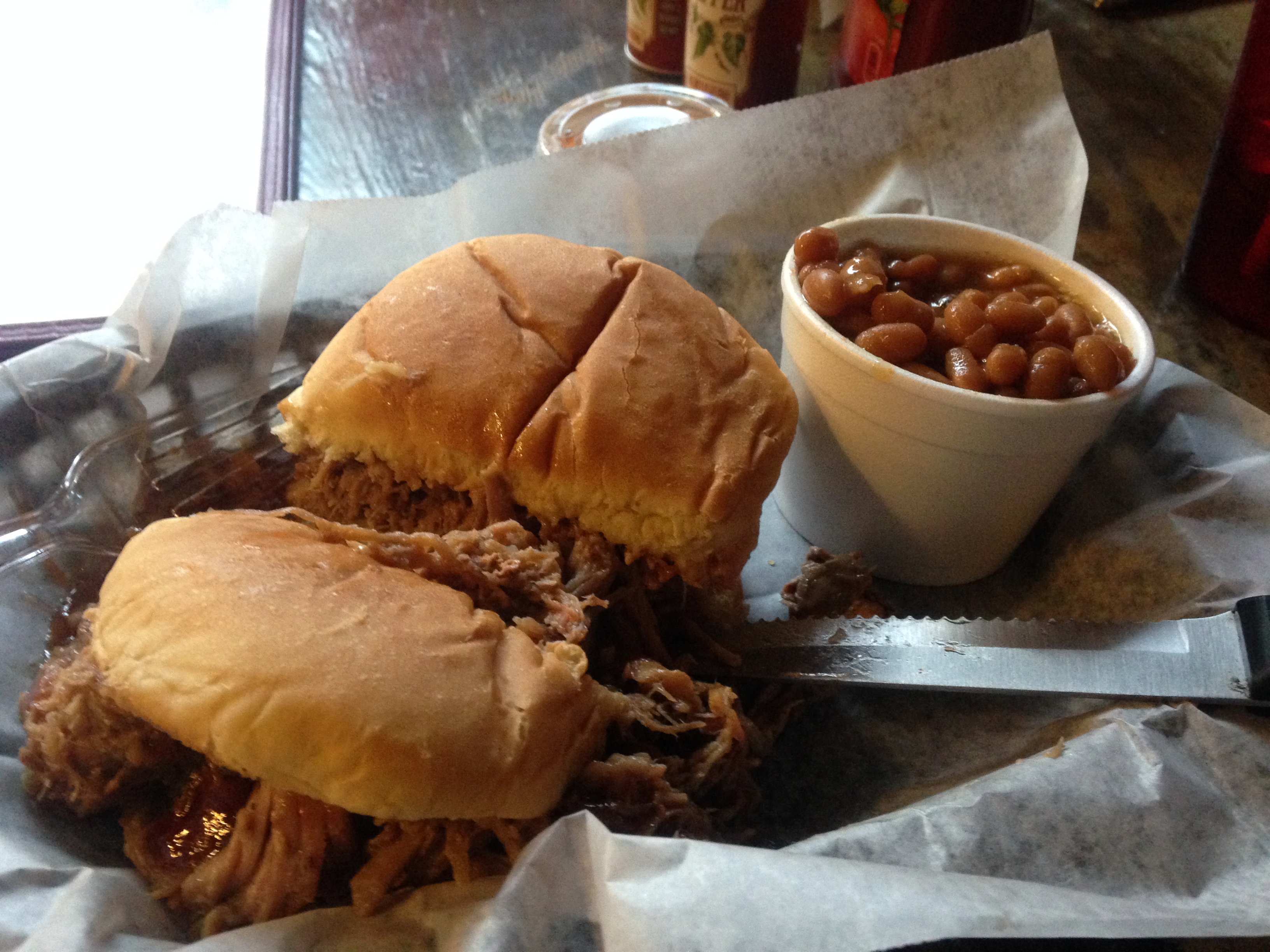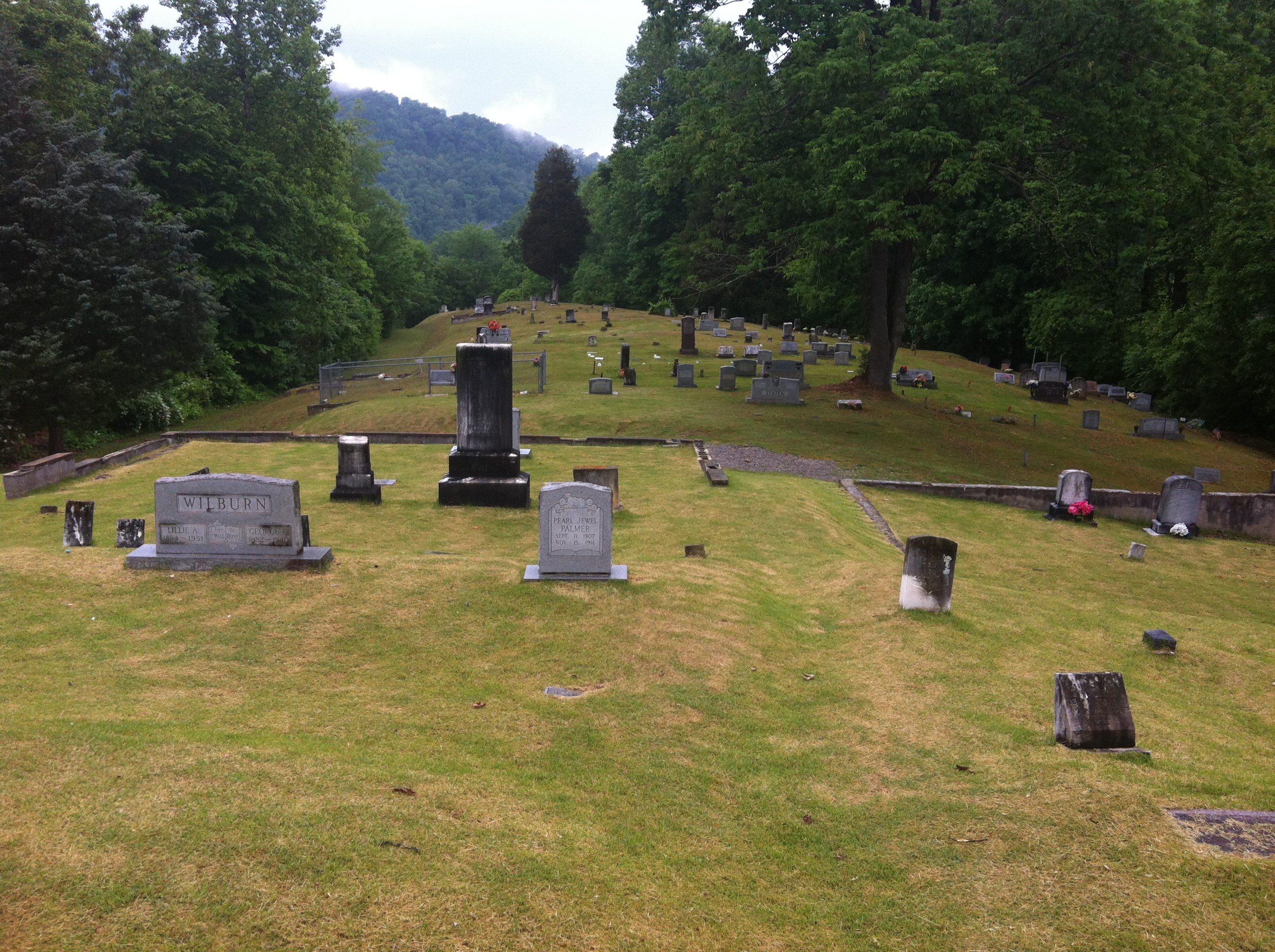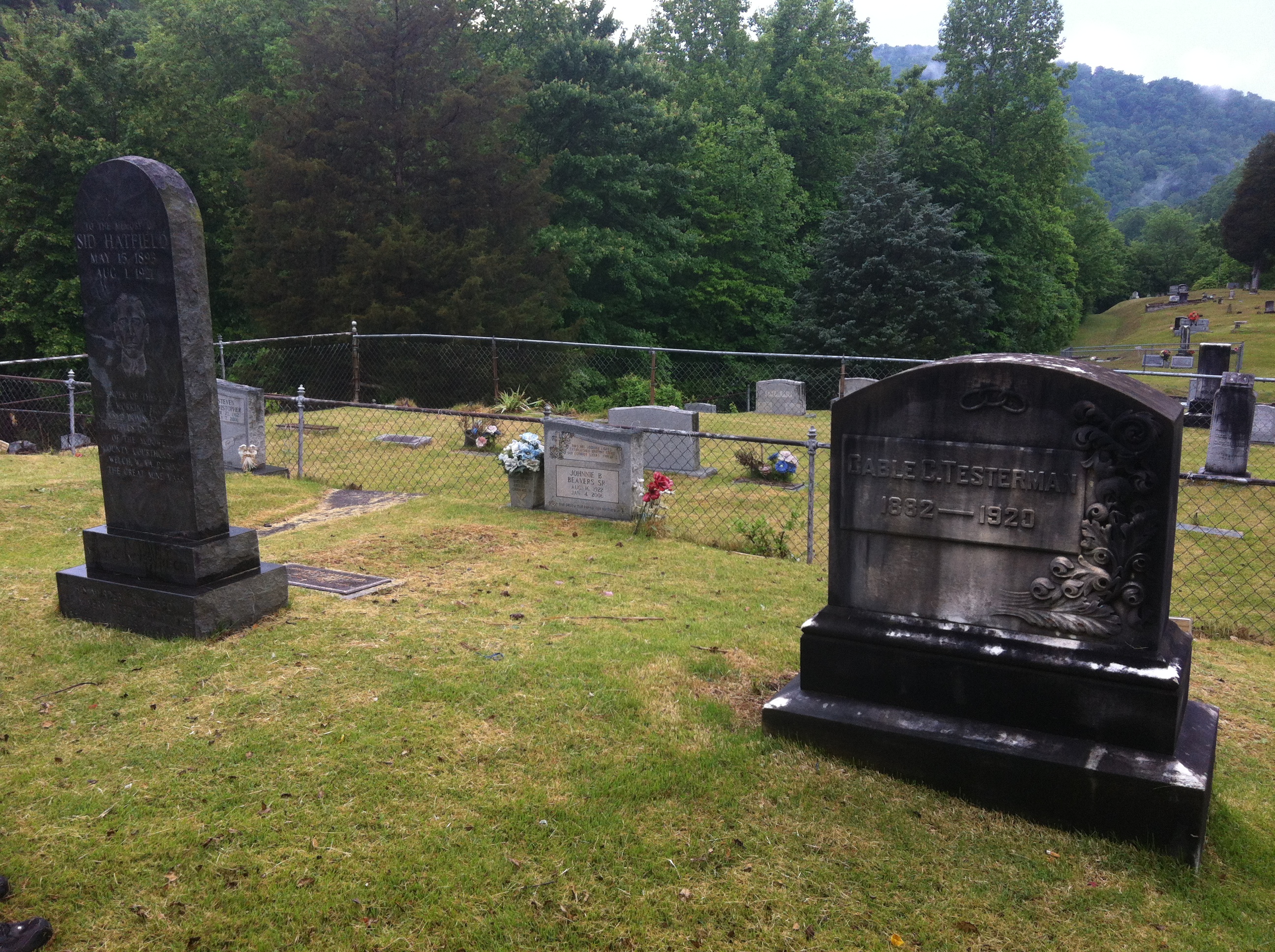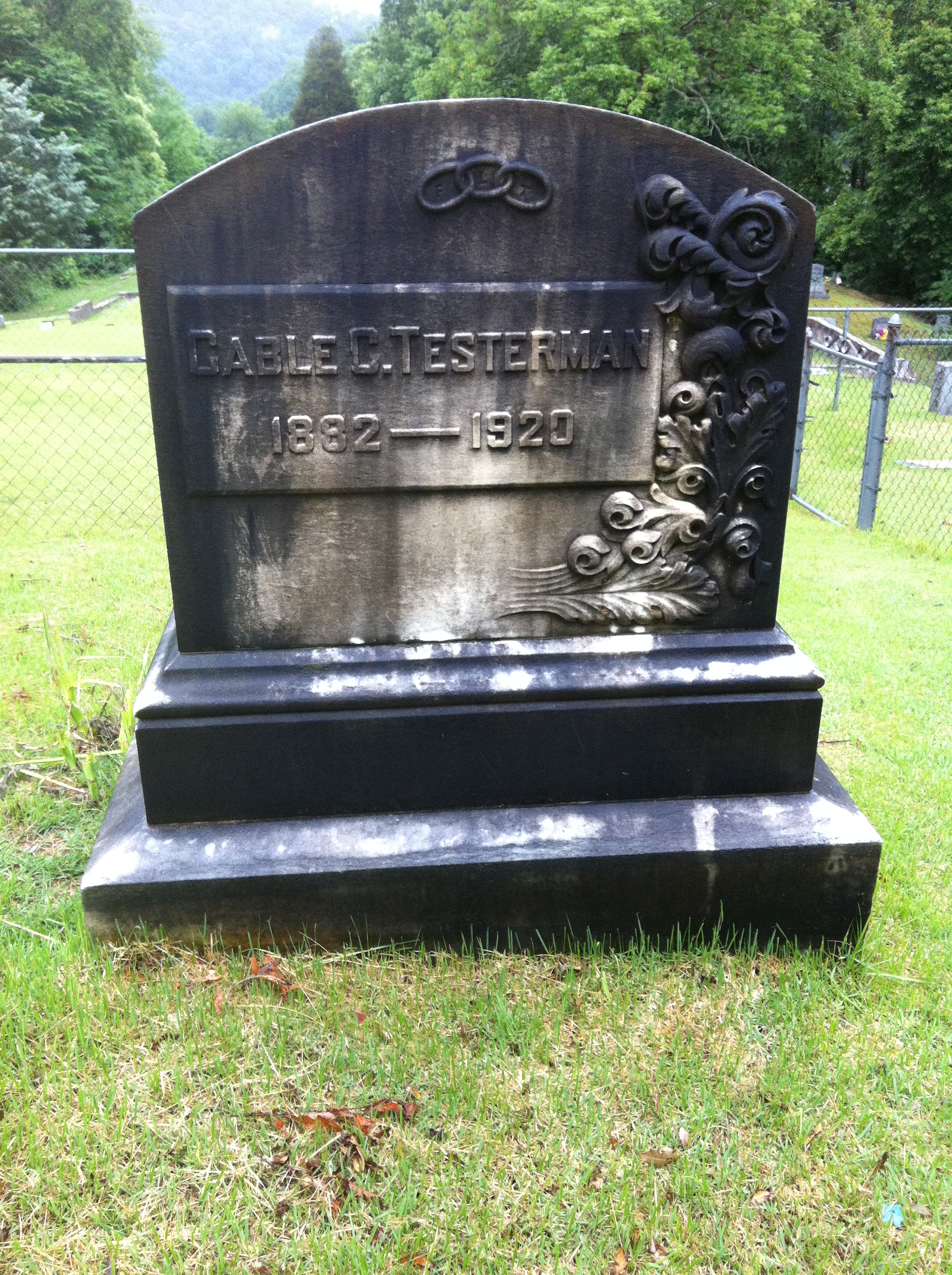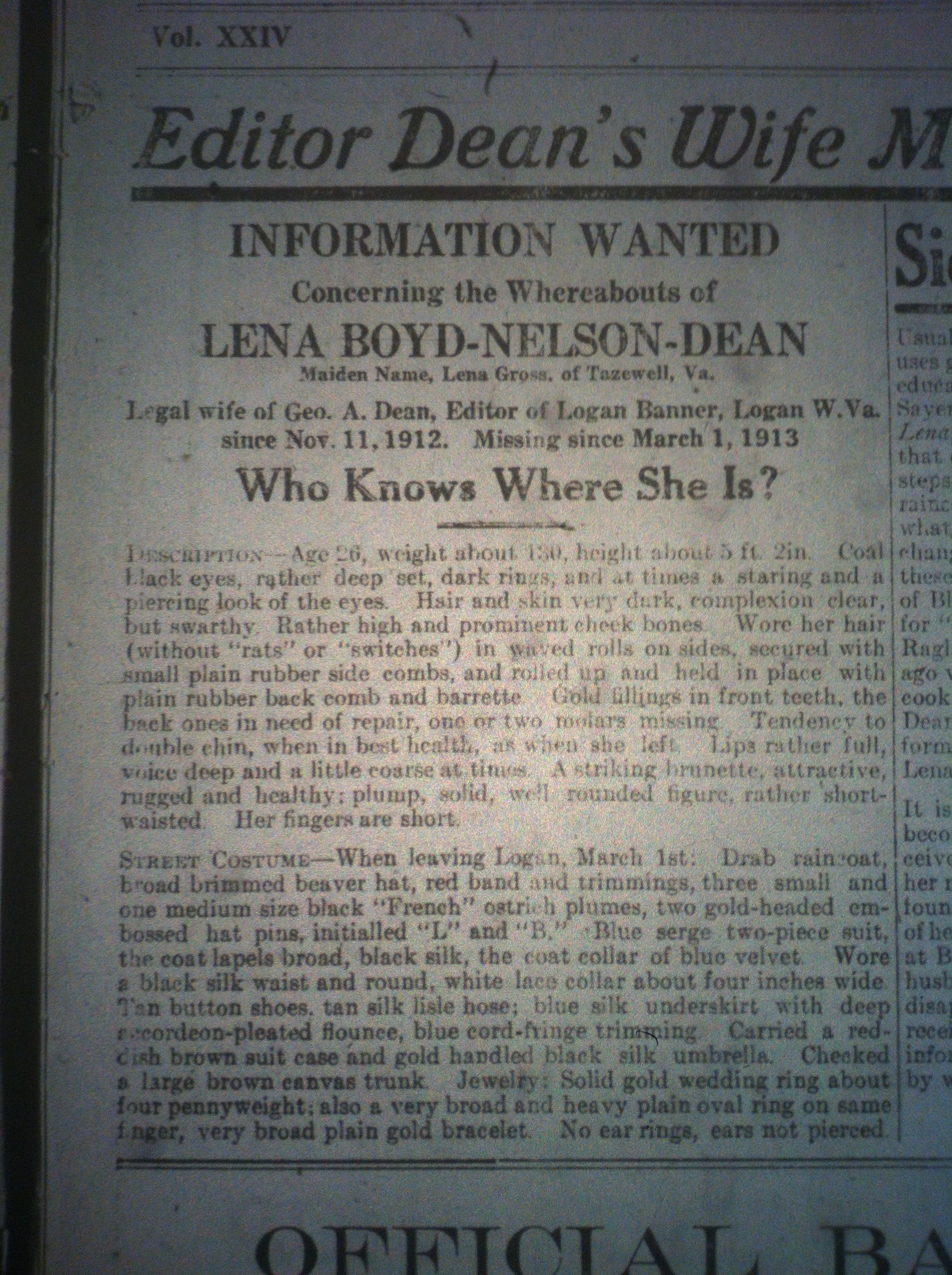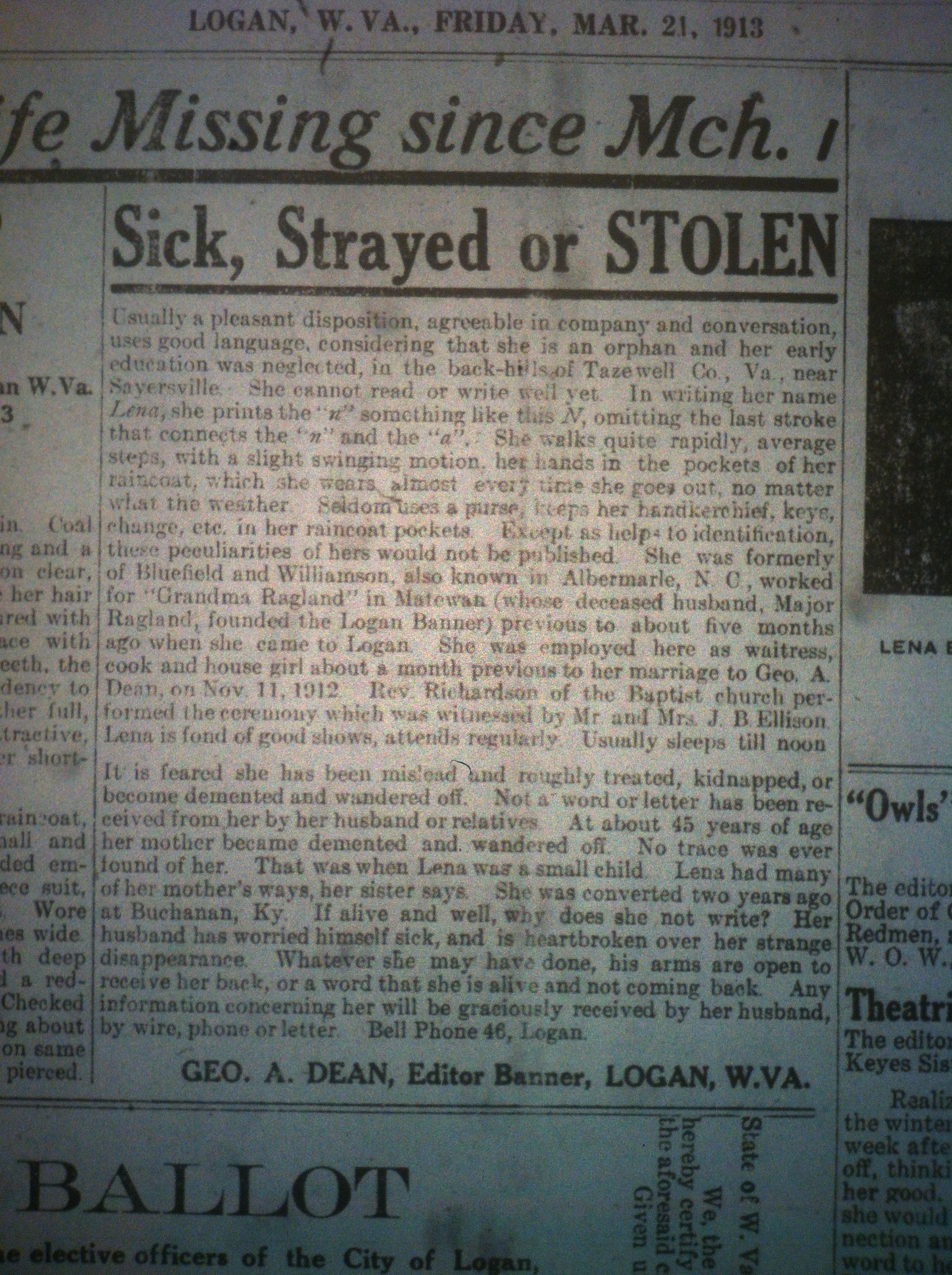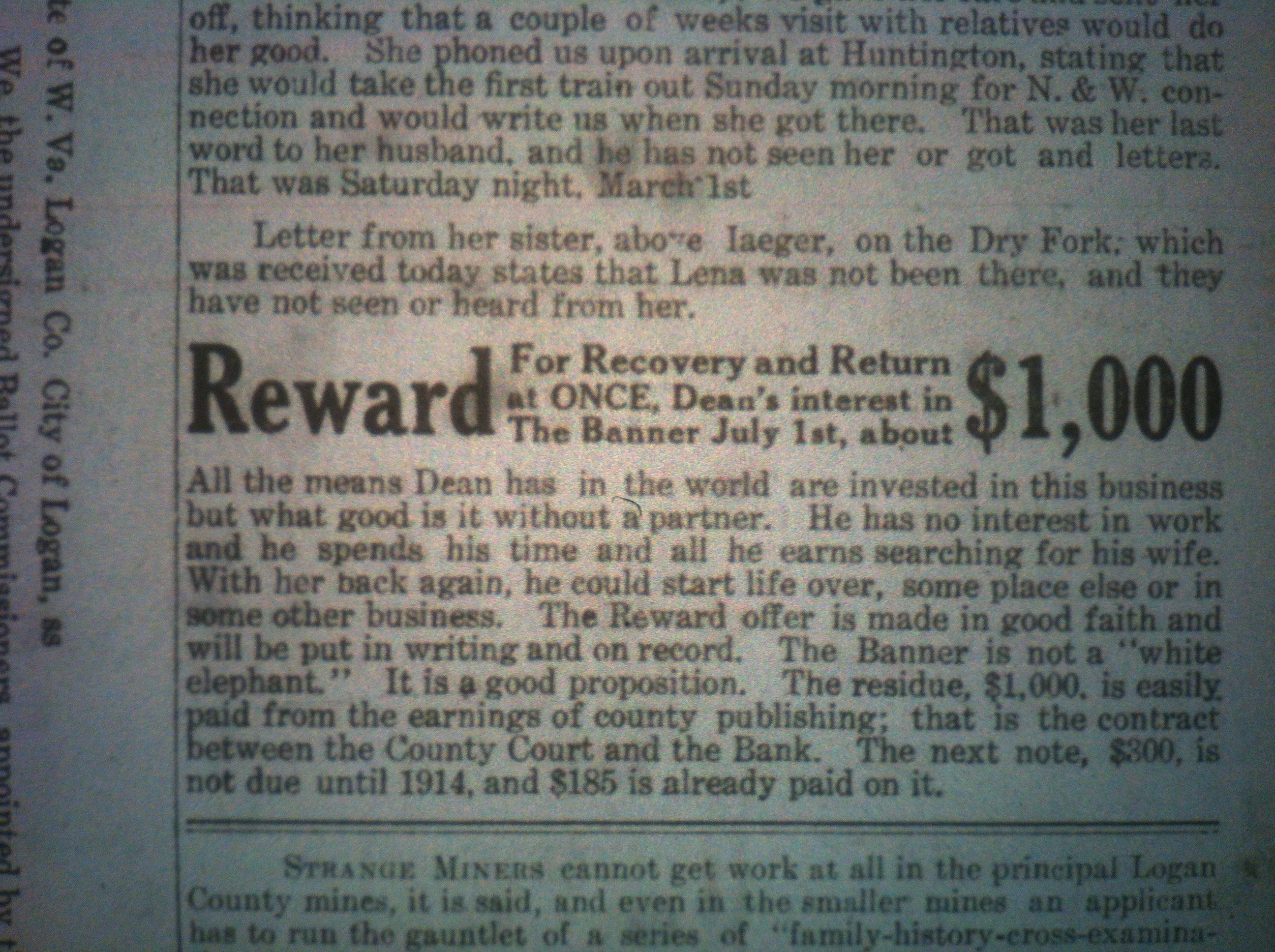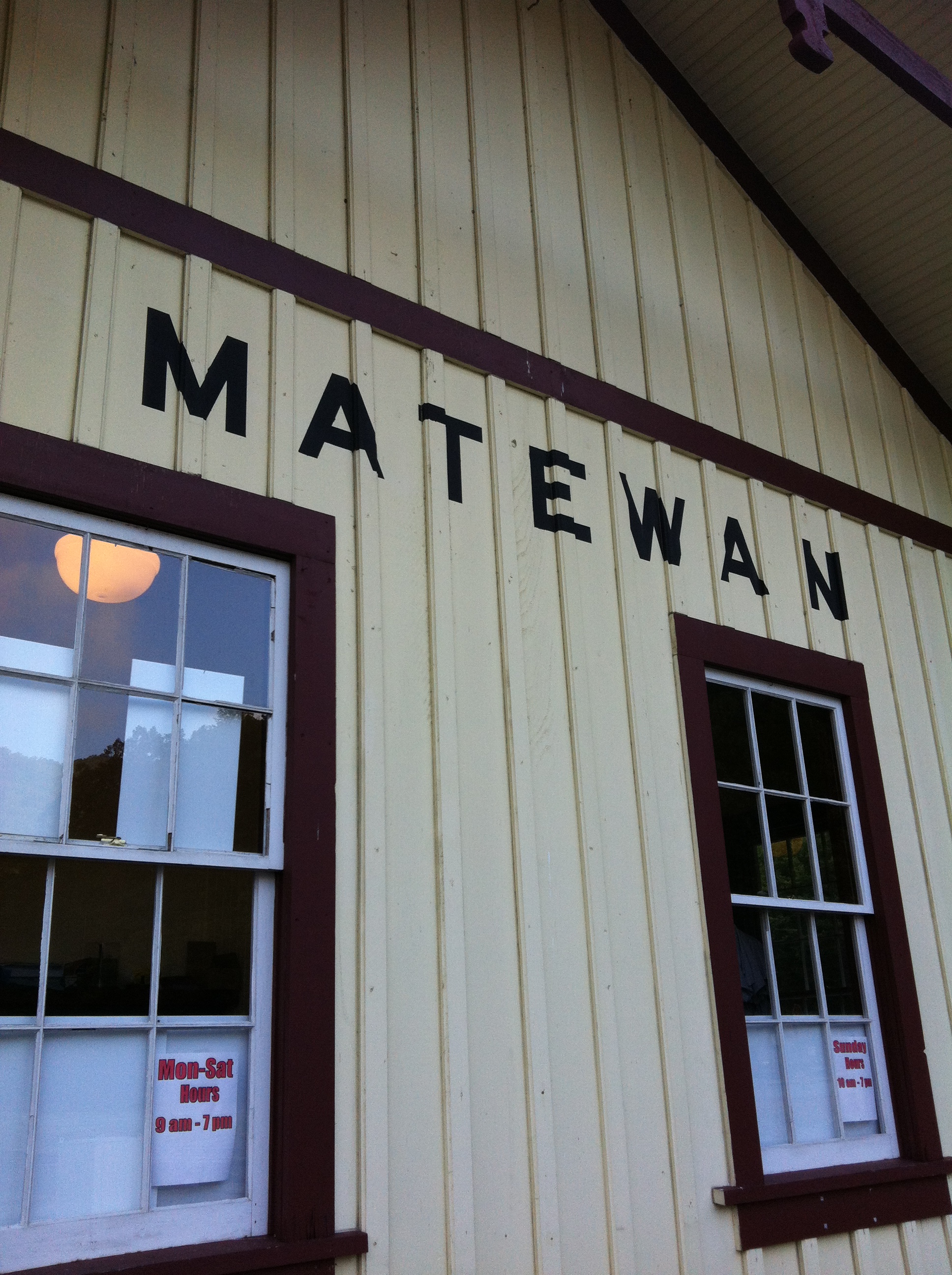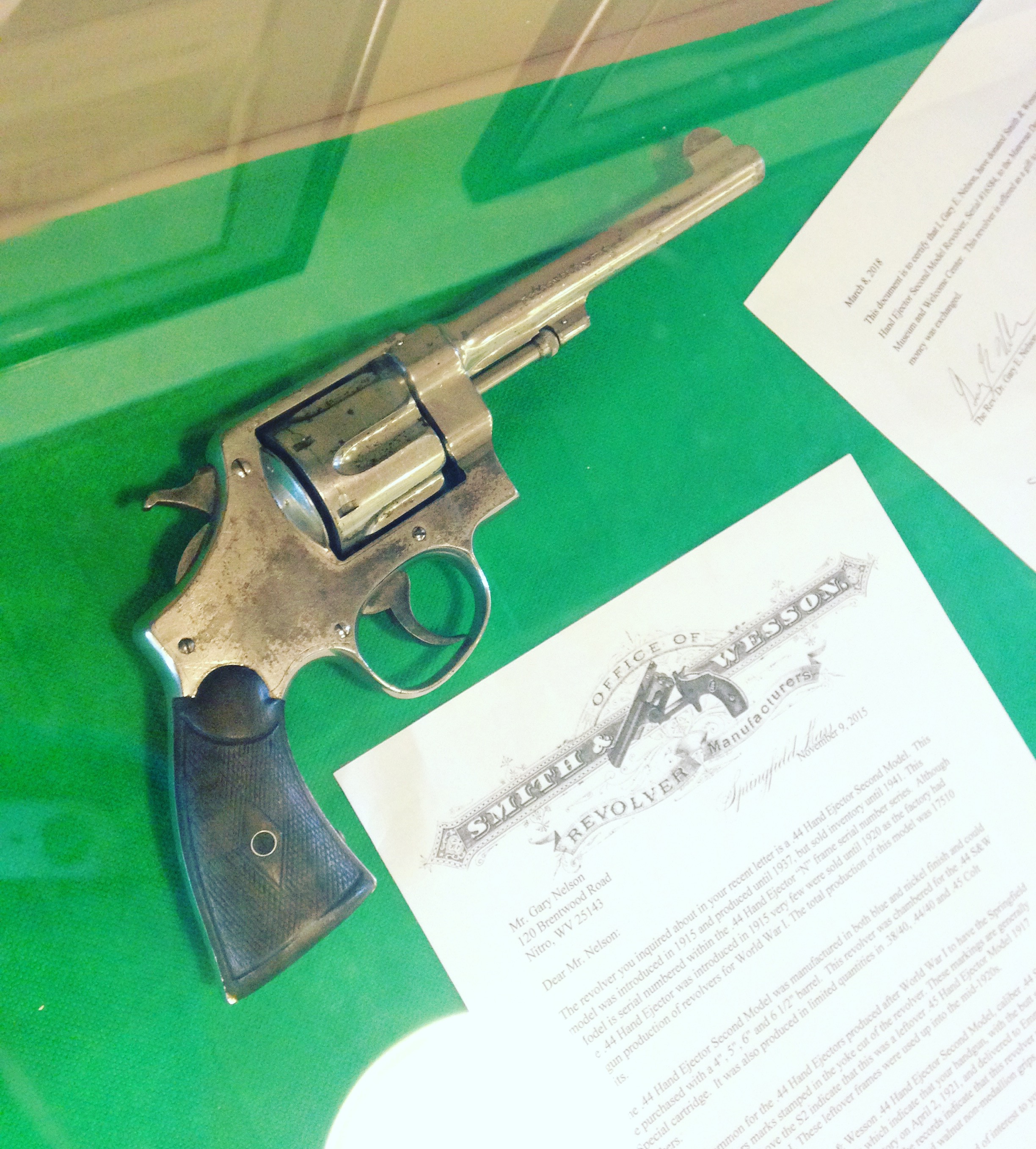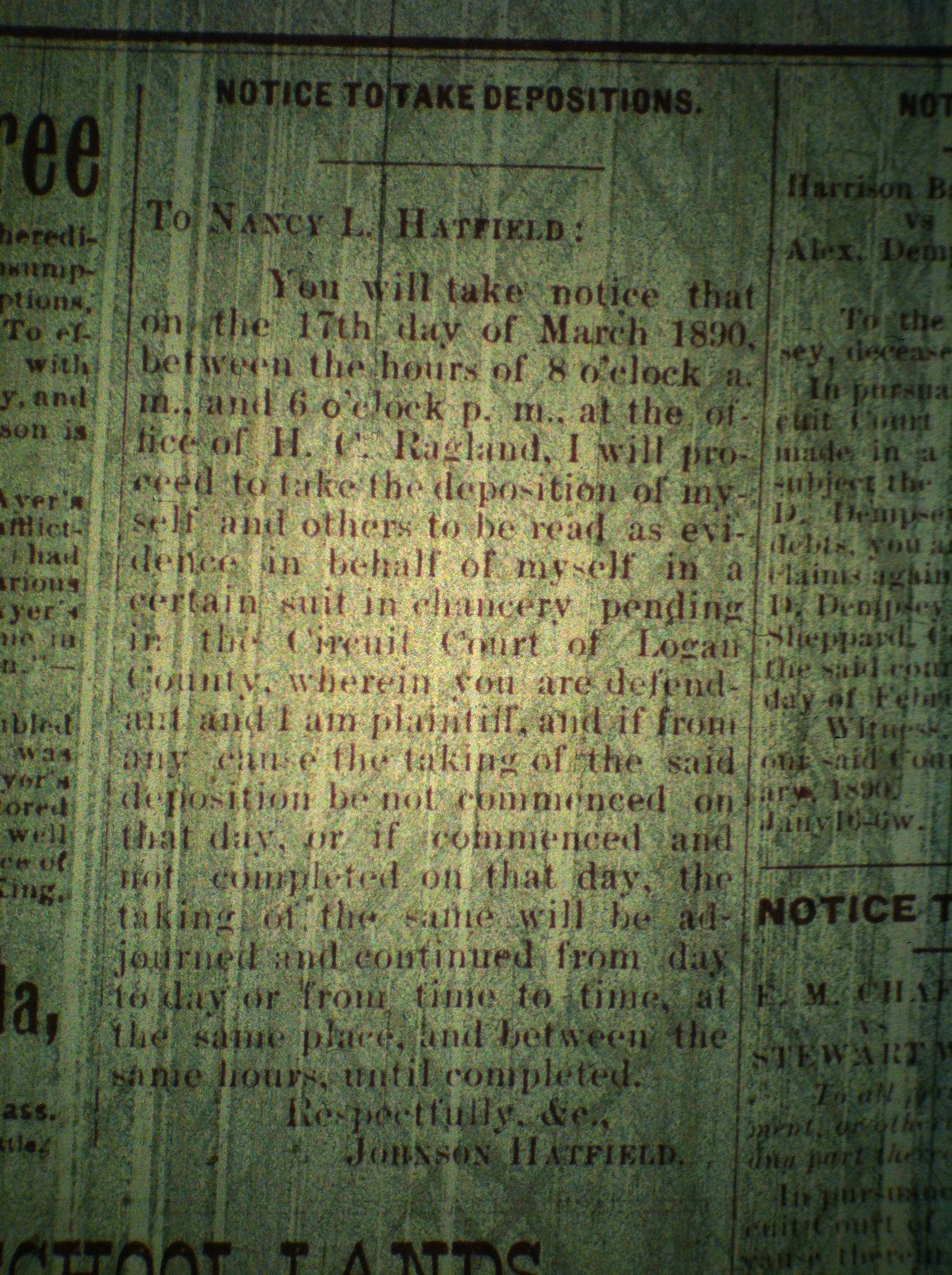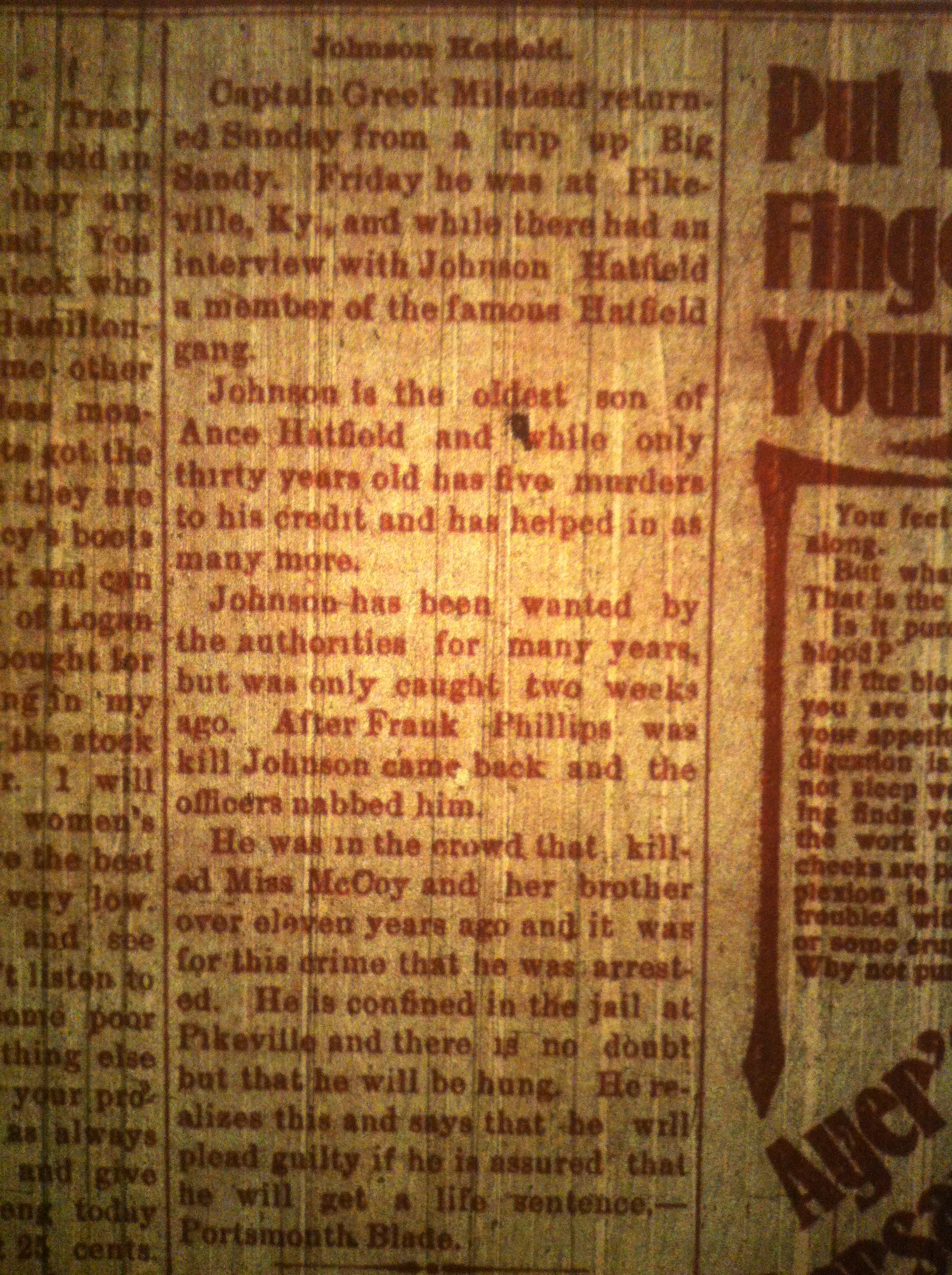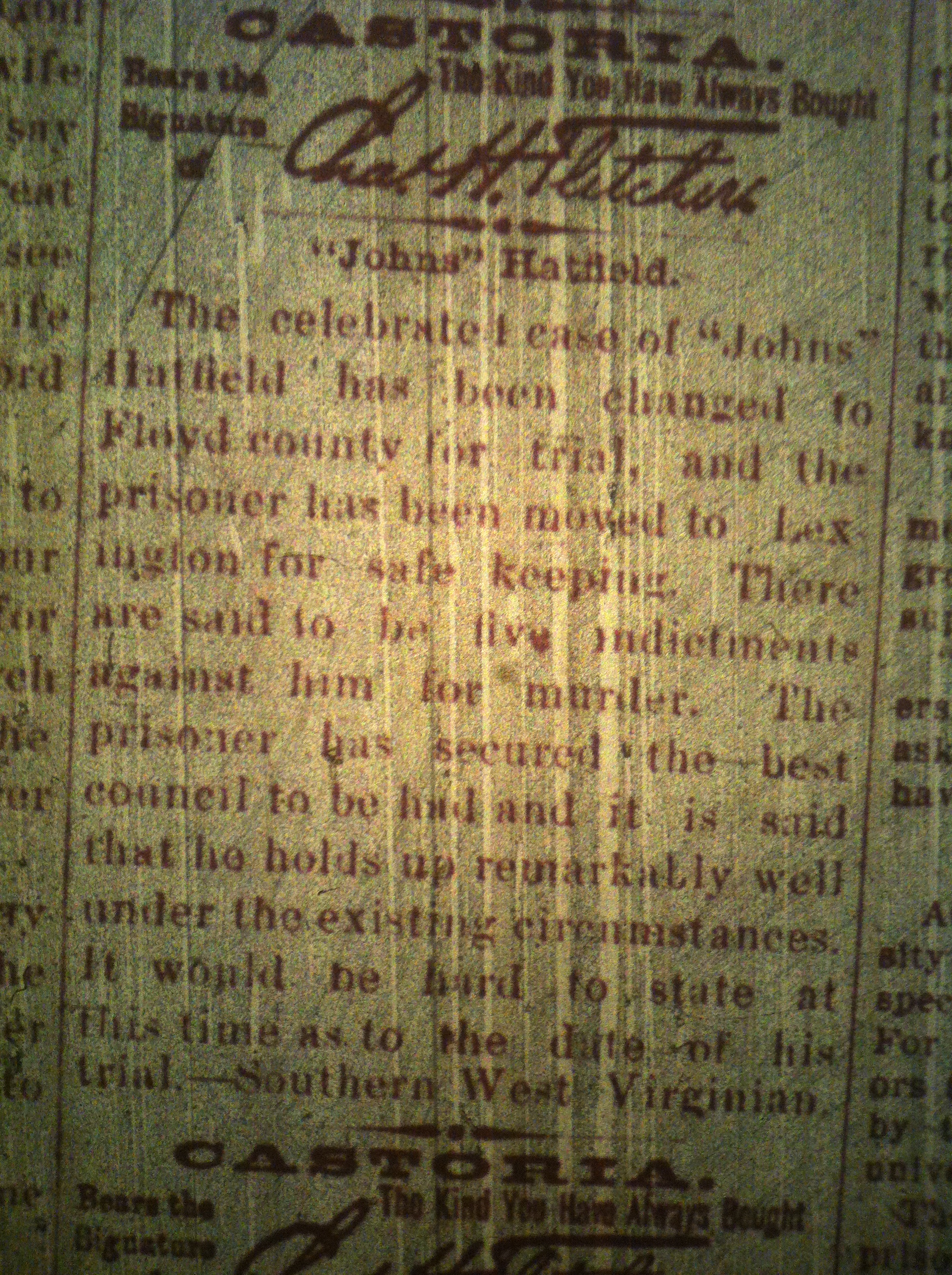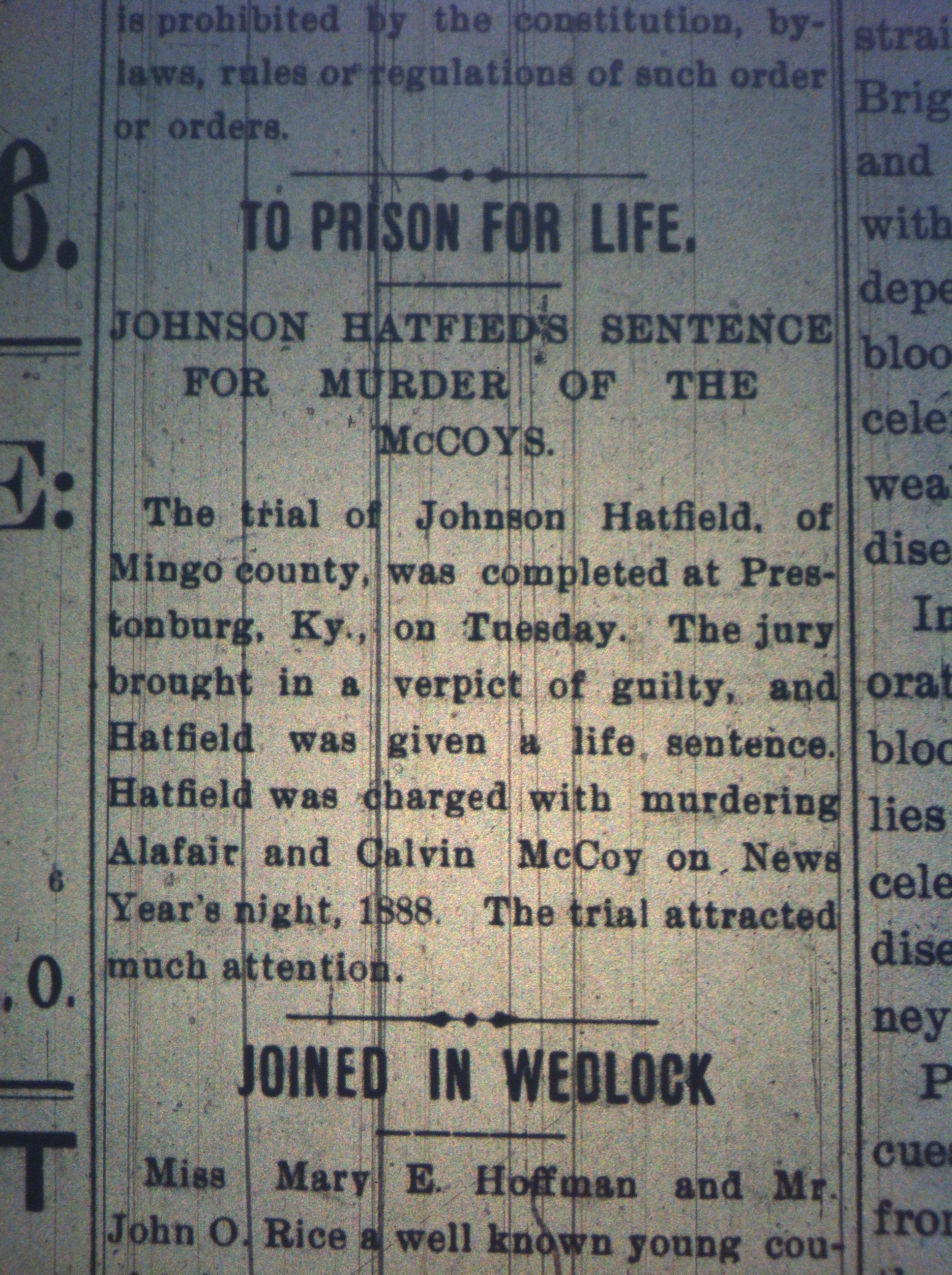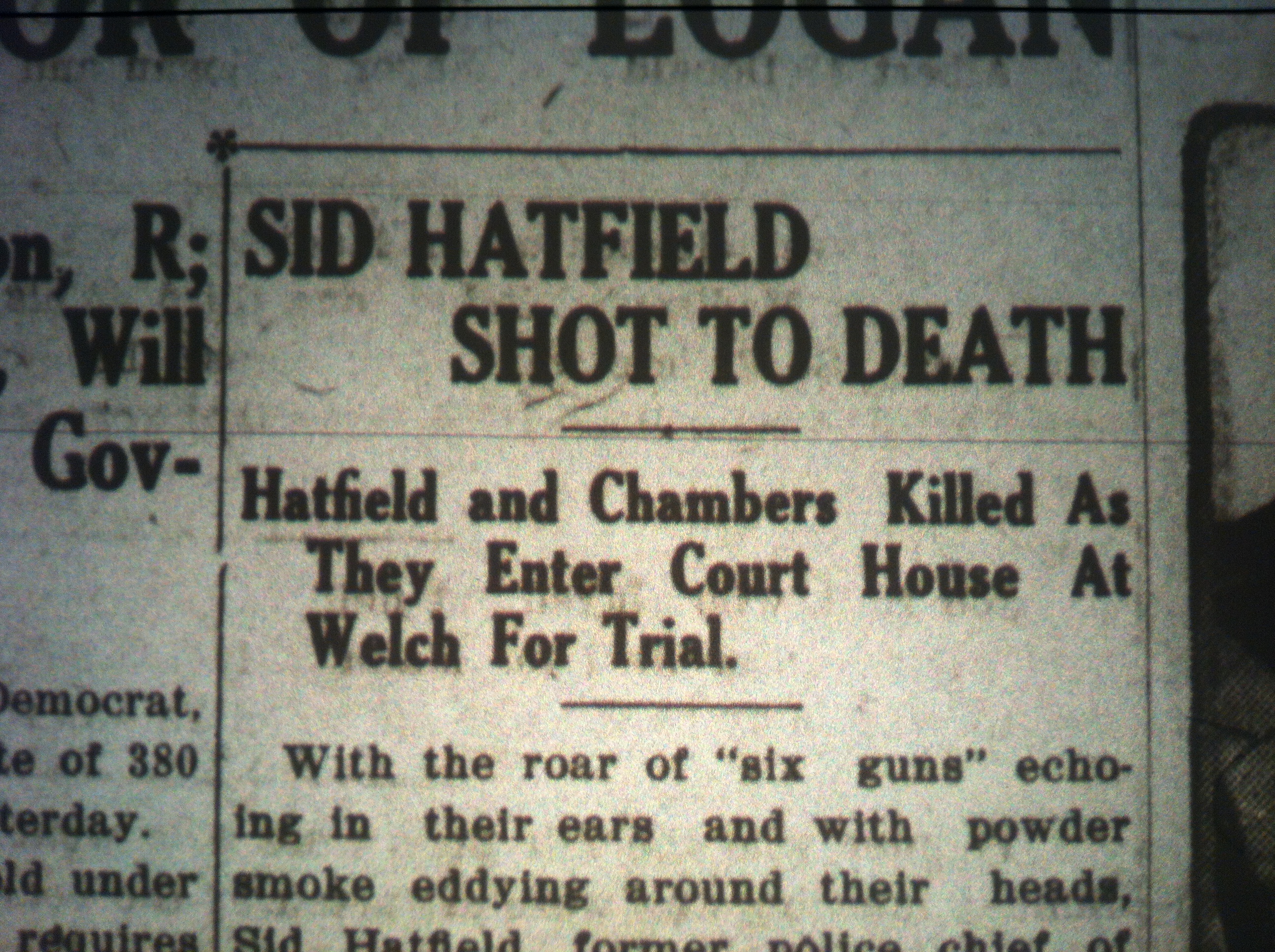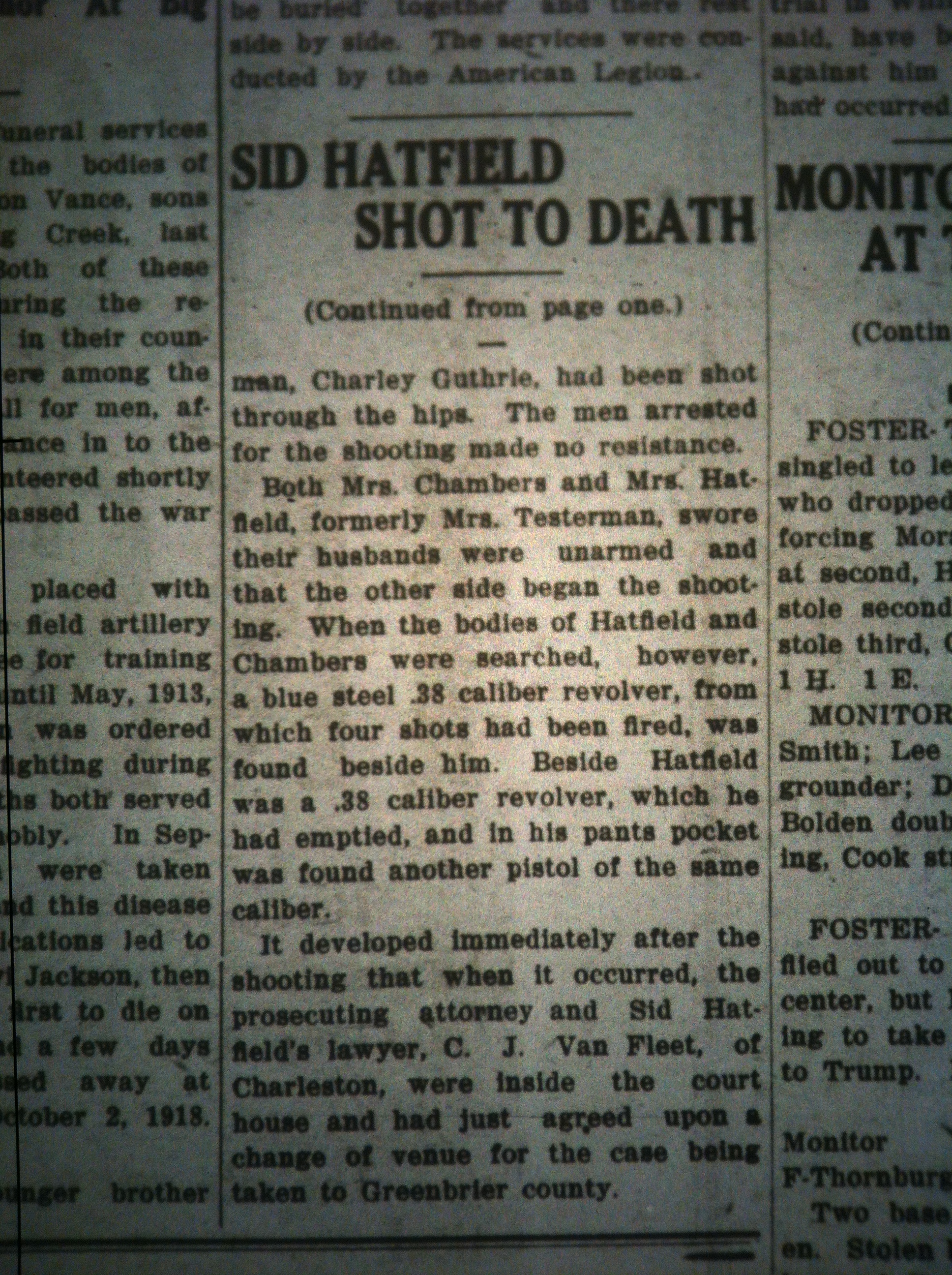Tags
Allen Hatfield, Anse Ferrell, Beech Creek, Cap Hatfield, Devil Anse Hatfield, Double Camp Hollow, Elias Hatfield, Ellison Hatfield, Estil Hatfield, Hatfield-McCoy Feud, Island Creek, John Hennen, Kentucky, Mate Creek, Matewan, Mingo County, North Matewan, Pigeon Creek, Pike County, Rutherford Hollow, Tom Chafin, Truman Chafin, Vicy Hatfield, Wall Hatfield, Warm Hollow, West Virginia, Williamson, Willis Hatfield
On June 21, 1989, scholar John Hennen interviewed Tom Chafin (1911-1997) of Williamson, West Virginia. What follows here is an excerpt of Mr. Chafin’s story about the death of his grandfather Ellison Hatfield in 1882 and other general memories of the Hatfield family.
JH: Okay, let’s go ahead and just follow that line. Tell me about Ellison Hatfield. And of course Ellison Hatfield was one of the participants in the early days of the so called Hatfield and McCoy feud.
TC: He’s the one that the McCoys killed. Uh, he lived up Mate Creek at the mouth of a hollow they call Double Camp Holler. He came down to Matewan here and got with some of his friends and they had a saloon here. It was called a saloon then, not the liquor store like we call it.
JH: Do you have any idea where that saloon was?
TC: Uh…the saloon was close to where the liquor store is now.
JH: Okay.
TC: I’m…I’m sure it was in the same building. That’s the Buskirk building. And he got with some of his friends and they got to drinking and was a having an election across the river in Pike County, Kentucky. Just across the river here. And he said to them said, some of his friends said, “Let’s go over and see how the elections goin’,” and when they got over there, they got into it with them and he was cut all to pieces with knives. He didn’t die in Kentucky. They loaded him up and hauled him back in a wagon. They hauled him back through the river up here at the upper end of Matewan and took him to Warm Holler. Now this is Warm Holler straight across from the bank on the right goin’ down there. You go across the railroad tracks. Uncle Anse Ferrell lived there. That was Ellison’s uncle. Uncle Anse Ferrell lived there in a big old log house. And they took Ellison there to his house that evening and he stayed there all that evening, all that night, and all day the next day and died the next evening. Just about dark. But in the mean time now, the Hatfields captured the three McCoy boys that they said did the killin’ of Ellison. Cuttin’ him up with knives. They captured them and took them up to a place they call North Matewan just out of Matewan here. They had and old school house there at the mouth of Rutherford Hollow. And they had an old school house there at the mouth of Rutherford Holler and that’s where they kept the three McCoy boys. All this evening, all night tonight, all day tomorrow, until tomorrow evening. And they brought him back down here, took him across the river and then a little drain, I call it, instead of a holler. It’s not a holler, it’s just a drain where water runs out where you go up to the radio station. That’s where they tied them to three papaw bushes. Now, we don’t have any papaw bushes around like we used to. We used to have whole orchards of them but they all disappeared. Why, they was papaws everywhere You could pick up a bushel of papaws anywhere when I was a boy. But you don’t even see a papaw tree any more. They said they tied them to three papaw bushes and killed all three of them.
JH: And this was after Ellison died?
TC: They waited until Ellison died. Say he died this evening and they went up there and got them and took them over there I believe the next morning.
JH: Who were some of the Hatfields involved in this?
TC: Well, to be exact, I’d say Cap… Cap was the head man. He was Devil Anse’s oldest son.
JH: I’d like you to tell me a little bit more about Cap Hatfield and well, do you have a personal memory of Devil Anse? I know you have been to his house when you were a boy.
TC: No.
JH: You can’t remember anything directly about him?
TC: I’ve been to his house. I know where his house is. I knew what kind of house it was. It was a log house and it had a window in that end of it and a window in this end of it and it was across the creek. I could show you right where it is on Island Creek over there and I can remember goin’ over there with my grandfather Mose Chafin. Now, he was a brother to Devil Anse’s wife, Aunt Vicy. We’d go over and see Aunt Vicy after Uncle Anse had died. I believe he died in 1921 and I was ten years old when he died. And when I would go over there with him, probably I was twelve or thirteen or something like that, after Uncle Anse had died. And we’d ride a horse. I’d ride on the hind and my grandfather Mose Chafin. And I could tell you exactly how to go. We’d go up Mate Creek across the hill into Beech Creek and from Beech Creek into Pigeon Creek and Pigeon Creek into Island Creek.
JH: And Vicy was still living at that time?
TC: Yeah.
JH: So you knew her then?
TC: Yeah. She was a pretty big fat woman. She wasn’t too big and fat. She was about, say, hundred and sixty, something like that, I’m guessin’. I’m gonna guess it. About a hundred and sixty pound. Anyhow, she was a big fat woman.
JH: Now, Cap lived on up into…to be an old man?
TC: Yeah. Willis is the last man that…last one to die.
JH: He was the son of Devil Anse also?
TC: Yeah. I was with him at a birthday party for Allen Hatfield on Beech Creek. That was his cousin. Allen was Elias’ boy* and he was Ellison’s boy**. Willis was. That made them first cousins and Willis was the only Hatfield left on Island Creek so we got him to come to that… Allen’s boy Estil Hatfield got him to come over to the birthday party, and I believe Truman went with me. He died in seventy-eight. I can tell you when he died.
JH: Willis?
TC: Willis died. Last child that Devil Anse had died in seventy-eight. 1978.
*Should read as “Wall’s boy”
**Should read as “Anse’s boy”







